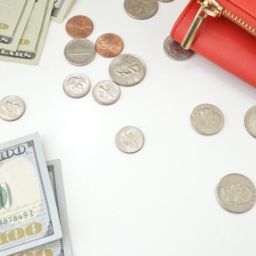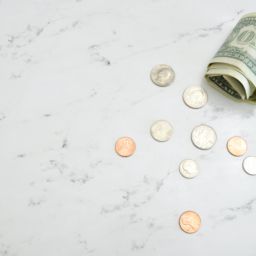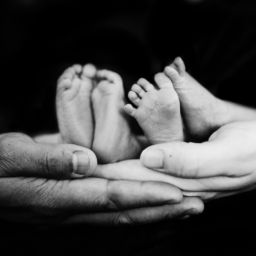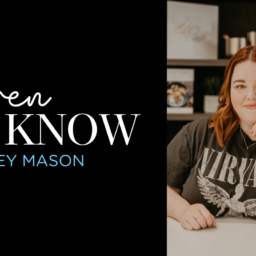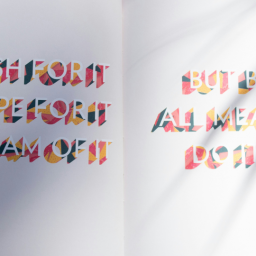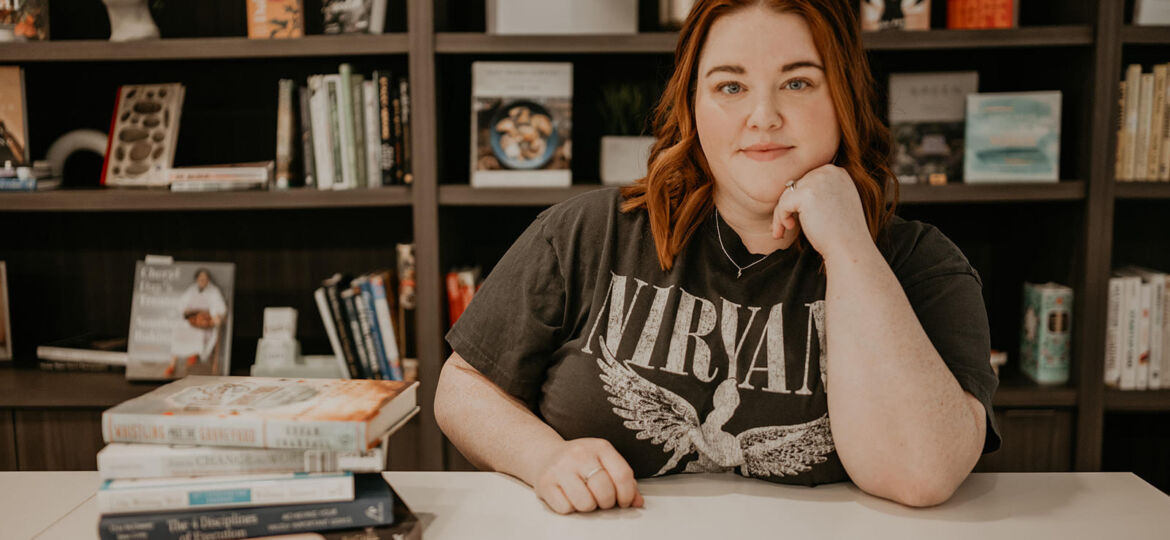
In 2017, Brittney Mason had $25,000 in debt from credit cards and medical bills. Surgeries, weekend trips with her husband, Brett, their wedding, and 10 days in London for their honeymoon — these were all expenses Mason put on their credit cards.
After being laid off from her job in sales and starting a new job at a bank making significantly less money, Mason took a deep-dive into her and her husband’s finances. She realized they were spending way more than they were making. While they were able to pay their bills on time, they weren’t making a dent in paying off their credit cards. Debt was something she thought she would always have to live with, she said.
Because she and Brett wanted to start a family, she began to tackle their finances. She started by paying off her smallest debts, like her credit card with a $300 limit and Federal Pell Grants that came back to haunt her 10 years later.
By the end of 2019, Mason had paid off all their credit card and medical bill debt, which was close to $45,000 due to interest. In two years, Mason’s 480 credit score grew to 800. When her daughter was born in 2018 and spent three weeks in the NICU, they used savings to pay for the medical bills.
We spoke with Mason about her journey becoming debt-free and her advice for those wanting to start paying off their debts and create a budget that works best for them and their family.
How did you first start budgeting your money to pay off your debts?
I went hardcore into tracking every penny we had and where it was going. We each had an allowance of $10 a month that we could do whatever we wanted with — I always went to Starbucks. [My husband’s] probably went toward McDonald’s. We would only spend $25 a month eating out at a restaurant. I tried to do $50 a month for our grocery budget, and I remember being able to do that successfully a couple of times.
Every dollar that we had left over, we would put toward debt. I found that to be really rewarding, that I could scrape together $200. It took a while, but not as long as we had expected because it just started snowballing. Once we paid off one debt, we would have that amount every month to pay toward the next.
What advice would you give to those who feel so overwhelmed by their amount of debt that they think it’s impossible to become debt-free?
 I’ve walked so many of my friends and family through the process of just starting. What I always tell them to do is get a piece of paper and just write out every debt. It’s going to feel gross and really ugly, but write out every debt you have and be very honest with it. Go through your bank accounts, look at the last three months and average. Then, you’ll know how much you’re spending on your everyday expenses.
I’ve walked so many of my friends and family through the process of just starting. What I always tell them to do is get a piece of paper and just write out every debt. It’s going to feel gross and really ugly, but write out every debt you have and be very honest with it. Go through your bank accounts, look at the last three months and average. Then, you’ll know how much you’re spending on your everyday expenses.
When it comes to debts you owe, you’ve got to think of all of them. If you owe your brother $25 from borrowing it a couple months ago, that needs to go on your list. That needs to be a priority. Even though there’s no interest on it, get those things paid off because you don’t want to owe your mom money. It feels icky.
I started at my smallest debt because it gave me the momentum and the courage to continue. When we felt more confident, then we switched to paying off the ones that had the most interest because we knew that was going to save us the most money over time. I always tell my friends and family to start with the smallest thing, the easiest thing to accomplish. Give yourself the confidence to continue, to press on, and to get to a point where it’s all done and your money is managed instead of overwhelming you.
How do you and your husband communicate and work together on your finances and budgeting?
We do work really closely together to make sure we are both aligned with everything that we’re doing in terms of our finances. At the beginning, that looked like us having hours-long debates about paying off this debt versus this debt.
Now, it looks more like us having long debates about, “Do we build a new home, or do we put $50,000 to $100,000 into the home we have? How does that look for our family? How does that work for our life? What does that do to our budget and impact our day-to-day life?”
Conversations like that would have never been possible without the conversations we had before, where we were just trying to figure out what debt to pay off and if we can afford to stop at Starbucks on our way somewhere. Our communication has just always been really open, and we’re always just chatting about money.
In your monthly budgeting YouTube videos, part of your budget includes putting money aside for your children’s future. How would you recommend planning and saving for the future while paying off debt at the same time?
We make savings automatic. If you give yourself the option of physically transferring the money [to savings] every month, you can think, “Oh, college isn’t for, like, 15 more years. I’m not going to put it in there this month because we could use the extra $100 in our account.” We never wanted to think that way because it creeps up way faster than you’d ever think. While we are specifically saving for our kids, no matter what they decide to do in the future, we do have a 529 Plan for each of them that we let other people contribute to.
Let family and friends know that you’re prioritizing [your children’s] future over gifts. Letting people know that your priority for your children is making sure that their futures are successful instead of worrying about if they have the newest, latest, greatest toy — that’s been helpful for us.
On your YouTube channel, you vlog about your low-buy grocery challenge this year. What is this challenge, and how is it helping you save and budget your money?
I’ve always been a proponent for building my grocery list around what I already have to reduce food waste and cut down on the grocery bill. Something that I have not always been great about is using what we have in our freezer or in the back of the pantry. When I’m trying to do low-buy, I channel my inner Jordan Page and I do shelf-cooking.
When it was just Brett and I, I was able to [grocery shop] for $25 to $50 a month because we, as two adults, would say, “Okay, I did not like these chicken patties, but we will eat them because they are edible, and that’ll be five meals for us.”
Now that we have kids, it’s a whole different thing because they only like one kind of yogurt. If you happen to try a different kind because the store was out [of the one they like], then they’re not going to eat it. So, I was trying to do, like, $75 a week [in grocery spending.] Recently, it just did not work out. I have twins who will be 2 this month and a 4-year-old, and they just have wild needs. Inflation and grocery prices have been insane in the last year, so it’s very difficult to do.
I didn’t totally fail my grocery challenge at the beginning of the year, but I didn’t super-succeed either. It’s so funny that at the beginning of my journey, I could spend between $50 to $200 a month on groceries, and that’s where we really were able to cut back and make some changes toward paying off our debt. Now, if I get to the end of the month and I’ve spent $800 to $,1000 for groceries, I feel that’s successful.
How do you stay motivated and encouraged to stick to your budget when you don’t meet one of your budgeting goals?
It’s about looking at the goals in a different way. I can realize, “I didn’t meet that goal. I spent $100 more on groceries than I wanted to, but I made my kids’ favorite breakfast five times in the last month. To boot, we didn’t spend as much going out to eat.” Knowing that my family is happy, healthy, and fed, and we’re not going back into debt — that’s where I feel that my goals are more accomplished rather than just looking at the numbers at this point in my life.
Nicole Thomas is a writer and digital marketer who loves cozying up with a book and cup of coffee. When she’s not reading or writing, you can usually find her crocheting another sweater or cardigan for her wardrobe. You can find her on LinkedIn or Twitter.
All of our content—including this article—is completely free. However, we’d love it if you would please consider supporting our journalism with an Indy Maven membership.











